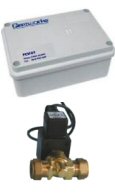-
Place bucket under urinal
-
Remove existing waste outlet by undoing the holding nut that connects the outlet to the bowl.
-
Remove old sealing compound from around the drain of the bowl and clean surfaces. Also clean the underside of the bowl.
-
Apply suitable sealant (e.g. “plumbers mate”) to inner lip of new waste outlet provided by Gentworks, then push outlet into urinal bowl
-
Under the urinal bowl, secure the waste outlet with rubber sealing washer and then the backnut, both of which are provided by Gentworks. Thread backnut to bottom of bowl until hand tight.
-
Whilst holding the outlet stationary, tighten the backnut with suitable pliers one complete turn.
-
Remove excess sealant around the waste outlet from the inside of the bowl. Use a Stanley knife for plumbers mate, or a cloth for silicon sealant.
-
Fit trap (preferably new) to waste outlet and waste pipe.
-
Carefully pour two litres of warm water into the bowl, then check underneath for leaks.
-
If there is no need to rectify any leaks, insert waterless urinal cartridge. Note that there is a lug on the outlet that fits into a recess on the cartridge. The lug and the recess will have to be lined up for the cartridge to fit flush into the bowl.
-
Clean the bowl surfaces with the cleaning solution provided, including underneath the bowl and around the trap.
-
The waterless urinal is now ready to use.



